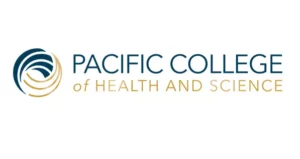Massage therapy has been practiced for thousands of years by many cultures. Today, Americans spend approximately $3 billion each year on visits to massage therapists.
While debate continues on the physiology of massage, experts agree that massage draws its benefits from more that just applying pressure to specific areas of the human anatomy. The Chinese believe, and so do many practitioners, that touch can serve as a natural, essential component to healing and the maintenance of good health. When administered properly by a trained professional, massage can reduce pain or adhesions, promote sedation, mobilize fluids, increase muscular relaxation, and facilitate vasodilatation (the widening of blood vessels due to the relaxation of smooth muscle cells within the vessel walls).
The actual mechanism of massage action is to revitalize the nervous system. By properly stimulating the pathways of nerve endings, massage affects the body’s vital organs and tissues. A skilled massage therapist can positively influence the nervous system, accelerating the metabolic processes, and stimulating blood and lymph vessels. This helps to excrete metabolic products and excess fluids and relieve venous congestion. A good massage also enhances blood supply to the skin, subcutaneous tissue, muscle tissue, and internal organs.
Additional research suggests that massage may reduce inflammation, stimulate tissue oxygenation, and soften scar tissue. It may also reduce the excess buildup of lactic acid in muscles, and stimulate the healing of connective tissues or damaged muscles.
Are you interested in becoming a certified massage therapist?
Visit the links below to explore our massage therapy programs at a campus near you:
Key Techniques in Massage Therapy
The basic techniques that facilitate these therapeutic mechanisms include:
Stroking—Characterized by even movements without losing contact with the skin. Uses a firm rhythmic pressure on the upward stroke, then glides down to the starting point with a very light touch.
Kneading—The skin is pulled together with subcutaneous fat and muscle to compress the tissues, which enhances muscle tone and stimulates blood circulation.
Rubbing—The skin is stretched along with subcutaneous fat and muscles in different directions. Here, the fingertips of both hands are continuously applied to a broad surface area.
Vibration—Moving the hands rapidly to stimulate tissues and other parts of the body. Vibration serves to enhance muscle tone and alerts nerves, dilates blood vessels, and speeds up metabolism.
Swedish massage — which uses vigorous kneading, rolling, vibration, percussive, and tapping to manipulate the body’s soft tissues — can help deliver nutrients and remove waste products from various tissues. It can help transform nervous energy into a more steady state. The rhythmic procedures of this massage can help re-establish balance by calming the nervous system.
When suffering from a disorder, consult a primary care physician before attempting massage therapy. The doctor may recommend the appropriate treatment that is best suited for the disorder. If massage is suggested, find a licensed massage therapist who is nationally certified through the National Certification Board for Therapeutic Massage & Bodywork (www.ncbtmb.org) or the American Massage Therapy Association (www.amtamassage.org). Note: Medicare and most private insurance do not cover massage.
Featured Posts:

